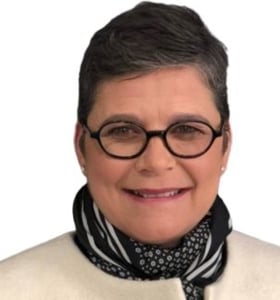Governance Surveys
Directorship Magazine
Ahead of Pride 2023, improving LGBTQ+ representation in the boardroom
This 2023 proxy season, the first phase of the Nasdaq Board Diversity Listing Rule went into effect. It means that Nasdaq-listed securities have publicly disclosed their board-level diversity statistics or have had to explain why they do not have diverse directors.
While it is too early to get a full view of these disclosures, a rapid review shows that the representation of LGBTQ+ women in US corporate boardrooms remains abysmal. When it comes to board diversity, where there is a will, there is a way. We know a shift in internal culture is necessary to make corporate boards more diverse. Initiatives to increase board diversity start at the top, from running diversity audits to connecting board talents to opportunities, securing board commitments to diversity, expanding recruitment efforts beyond the C-suite, or measuring progress transparently.
Despite progress in recent years on US boards of directors, diversity among board members still needs to improve. One of the issues often raised is the perceived need for qualified candidates from underrepresented groups. If companies recognize the value of inclusive leadership, hiring more women and people of color in the boardroom remains challenging. In 2020, the New York Times reported that the 3,000 largest publicly traded US companies found that only 12.5 percent of board directors were from underrepresented ethnic and racial groups and that only 4 percent of directors were Black, according to an analysis by the Institutional Shareholder Services’ ESG division, and that women directors only held 21 percent of board seats. According to a 2021 report by the Latino Corporate Directors Association, Latinas hold the smallest number of board seats, compared to any gender, racial, or ethnic group. Among women directors, Latinas hold only 1 percent or 59 board seats, compared to 1,226 White, 183 Black, and 89 Asian women.
The underrepresentation of LGBTQ+ people, who occupy only 0.6 percent of all Fortune 500 board seats as of 2021 despite 7.1 percent of adult Americans self-identifying as LGBTQ+ as of 2022, has only recently become apparent in the United States. Putting board-ready LGBTQ+ professionals on the nominating and governance committee’s radar screen is often overlooked by existing board members and recruiters. Whether it is because they do not see it as a priority or because they believe in a shortage of candidates is not clear.
The conversation over LGBTQ+ representation in the boardroom has picked up in the past two years with initiatives from the private sector and other regulatory initiatives. In addition, more and more states are implementing or contemplating legislation to mandate increased board diversity. Out Leadership, an NYC-based consulting firm, estimates that the number of companies in the Nasdaq that changed their board policies between 2022 and 2023 to be LGBTQ+ inclusive has increased from 113 to 1,871. These companies are starting to disclose the sexual orientation and gender identity of their board members. Recent prominent LGBTQ+ appointments in Fortune 100 companies, including those of Marty Chavez at Alphabet, Beth Ford at Starbucks Corp., and David Hedley at Sanmina, confirm the trend.
Why does it matter? The Association of LGBTQ+ Corporate Directors, counted only 15 lesbians among the more than 5,000 Fortune 500 Board seats. In addition to Beth Ford (CEO of Land’O Lakes and director on three public boards), Amy Lane (who serves on the boards of TJX and Nextera), and M. Michele Burns (who serves on the boards of Goldman Sachs and Cisco), there was also one self-identified non-binary board member outside the Fortune 500 Group, Udemy’s director Heather Hiles —who serves on the board of the Association of LGBTQ+ Corporate Directors. There are also two trans women, Meghan Stabler (Grindr) and Martine Rothblatt (United Therapeutics). This absence of visible role models doesn’t help change the workplace culture.
Two recent activities of the Association of LGBTQ+ Corporate Directors provide further insights into these issues. First, from February through March 2023, we surveyed over 200 existing and aspiring LGBTQ+ Directors among our members to better understand their challenges in entering the boardroom. Women respondents highlighted the lack of role models and limited networking and organizing options as contributing to making looking for a corporate board seat “intimidating.” While 80 percent of all LGBTQ+ existing directors claimed, “None—my voice is heard, and all views are acknowledged equally,” when asked if they encountered difficulties getting equally heard in the Boardroom, only 67 percent of all women selected that answer. Secondly, during a dinner last March cohosted in New York City for LGBTQ+ women with our partner JPMorgan, conversations around the room sent two clear messages: there is no shortage of qualified candidates, but participants acknowledged the challenges of the low visibility of LGBTQ+ women at the top of corporations, limited networking opportunities specifically targeting LGBTQ+ women and limited offerings in terms of professional development. Many women were more likely to join women’s networks instead, as they offered more structured professional development opportunities than less-valued socializing events. These issues also resonate clearly for LGBTQ+ people of color within our network.
So, what can be done to change these numbers?The Association of LGBTQ+ Corporate Directors is the only organization dedicated to increasing LGBTQ+ representation on corporate boards, focusing on women and racial minorities. Other minorities are ably and effectively represented by groups such as The Executive Leadership Council, LCDA, the Women Corporate Directors, and Ascend Pinnacle. It is common knowledge that at least two-thirds of new board seats come from networking, so LGBTQ+ professionals should be offered the same opportunity to connect and build relationships with other professionals facing the same challenges as they do to build a collective of people empowering and supporting each other, access tools, practices, and coaching to succeed in their careers.
The good news is that there is a strong and growing pool of qualified LGBTQ+ women candidates with expansive business experience ready to contribute to the boardroom who should be on the radar of nominating governance committees, CEOs, recruiters, or private equity firms. The Association of LGBTQ+ Corporate Directors intends to give visibility to the ample numbers of competent, experienced women executives ready for board service.
Diversity, equity, and inclusion should be at the heart of economic recovery. As companies are increasingly expected to take a stand on social issues while meeting the challenges of an incredibly complex world, real progress will come from proactive approaches focused on increasing equity and diversity at all levels, including the highest. Organizations that diversify their teams from top to bottom represent the world as it is: it is time for LGBTQ+ women to benefit from progress on gender inclusion in the boardroom too.

Fabrice Houdart is managing director for corporate equality initiatives at Out Leadership, a coalition of more than 85 companies working to advance LGBTQ+ equality.

Chiqui Cartagena is a Hispanic media and marketing thought leader and author of two business books on the Latino community in the United States.


